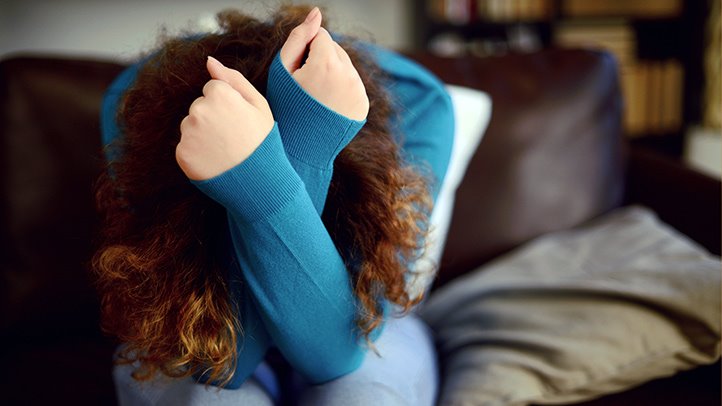
Panic disorder is a type of anxiety disorder where a person experiences unexpected panic attacks that keep recurring and appears to happen out of the blue. A panic attack is a sudden surge of intense discomfort or fear that can reach a peak within minutes. Everyone experiences feelings of panic and anxiety at some point in their lives and it is a natural response to dangerous or stressful situations. Most people experience a panic attack at least once in their lives, but not all of them have a panic disorder. For them, panic, stress, and anxiety can happen regularly and unexpectedly at any time for no apparent reason. People with panic disorders can also experience expected panic attacks, which is panic attacks that happen when there is an obvious trigger, such as a phobia.

The exact cause of a panic disorder is not clearly understood. Researchers have shown that panic attacks can run in families, but it’s still not sure if it’s because of genes or the environment someone grew up in. Panic disorder is also linked with significant changes that happen in life, such as getting married, having a first child, or leaving for college. All of these major changes can create stress that leads to the development of a panic disorder. Childhood experience, such as sexual or physical abuse, is another risk factor. Besides, the National Institute of Mental Health stated that women are more likely to develop a panic disorder than men.
Someone who has had four or more panic attacks or lives in fear of experiencing another panic attack may have a panic disorder and this can be an exhausting and terrifying experience. It comes with frightening and overwhelming symptoms, which last for 5 to 20 minutes. However, in some extreme cases, it can last for more than an hour. During a panic attack, you experience a rush of intense physical and psychological symptoms. This experience can be different for everyone and the symptoms may vary. The common symptoms of a panic attack include:
- Shortness of breath
- A choking feeling
- A feeling of being smothered
- Sweating
- Trembling
- Shaking
- Dizziness
- Pounding heartbeat or palpitations
- Chest pain and tightness
- Stomach pains and nausea
- Hot flashes or chills
- Tingling in the body
- Numbness
- Fear of dying
- Fear of going crazy or losing control
If you have any symptoms of a panic attack, you should call emergency medical care. Most people who have a panic attack for the first time believe that they are experiencing a heart attack. There is no lab test for panic disorder, but several tests will be performed to see if your symptoms are the result of a heart attack. Your doctor may run blood tests to check if it’s another condition that causes similar symptoms or electrocardiogram to check your heart function. Your doctor will usually refer you to a psychotherapist to treat the condition.

As you’re experiencing a panic attack, it can feel like the condition will never end. However, there are some techniques you can practice to reduce the severity of your symptoms. The techniques include:
- Always have a plan in place. For instance, when you feel a panic attack is coming, take yourself out of your current environment, sit down, and call a family member or a friend to help distract you.
- Deep breathing. Shortness of breath is one of the most common symptoms of panic attacks. It is important to acknowledge the symptom and know that it is only temporary. When you experience shortness of breath, take a deep breath, hold for a second, and release. Repeat this pattern until your breathing becomes steady. Focus on this exercise because it can prevent you from hyperventilating and stop other symptoms.
- Muscle relaxation techniques. You will feel like you have lost control of your body during a panic attack. With muscle relaxation techniques, you can gain back some of your control. The simplest but most effective technique for panic disorder is to practice Progressive Muscle Relaxation (PMR).
- Repeat a mantra. Try repeating something simple such as “I will be okay” or “I just need to breathe” as a coping mechanism.
- Focus on an object. Find an object you can see in front of you and take note of everything you notice about it.
The treatment of panic disorder focuses on reducing your symptoms, as well as the frequency and intensity of your panic attacks. Your specific treatment plan will depend on your case, the severity of attacks, and medical history. You may need therapy with a qualified professional, medication, or both. The most effective treatment of a panic attack and panic disorder is a form of psychotherapy known as cognitive-behavioral therapy (CBT). During this therapy, your therapist will teach you to change your thoughts and action. These are done so you can manage your fear and understand your attacks. Your therapist will also teach you about relaxation training. Many people who undergo this procedure have noticed a reduction within weeks. Symptoms can decrease significantly within several months.
You may also need to try medication as part of your treatment plan. These medications can help you manage your panic attack symptoms, along with depression and anxiety. The medications that your doctor may prescribe include
- selective serotonin reuptake inhibitors (SSRIs), including sertraline, fluoxetine, paroxetine
- benzodiazepines, such as clonazepam and diazepam
- serotonin and norepinephrine reuptake inhibitors (SNRIs)
- antiseizure drugs
- monoamine oxidase inhibitors (MAOIs).
Other than therapies and medications, there are several steps you can do at home to reduce your symptoms, such as exercising regularly, maintaining a regular schedule, avoiding stimulants such as caffeine, and getting enough sleep.
